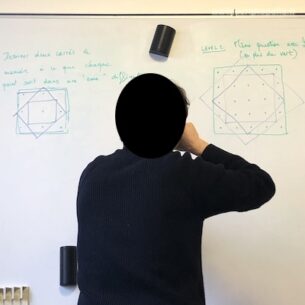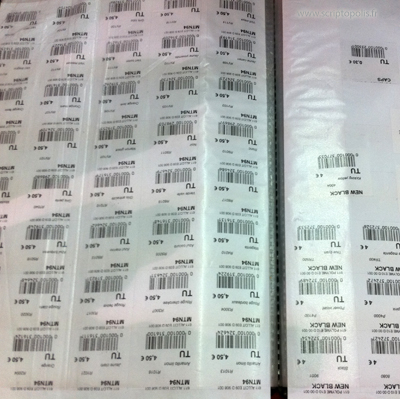Multiple references
Facing the shelve, she compares colors and chooses a blended shades of blue. Then, she puts spay cans on the counter, and waits to pay the bill. Yet, the salesman does not tell her the price. Beforehand, he grasps a file within which numerous labels are sorted out one next to another. Each of them displays a reference number, a bar code and a color name. The salesman takes a bar-code reader and places it in front of labels corresponding to spray cans put on the counter. It is only after this operation that he can tell the total price to the customer, who is waiting patiently. Once articles are packaged and paid, she leaves the shop and already thinks of her next action. The scriptopolian is still there, intrigued to see such a dance of labels: how one is supposed to understand this gesture? Why the salesman does not directly place the bar-code reader in front of each article?
Since the studies of actor-network theory, we know the better a reference firmly attaches a word to a thing the more it circulates. Its abilities to circulate among longer networks and to progressively acquire a form of universality rests on the consistency of that link. Yet, each entity is simultaneously part of different networks: multiple naming systems state some singular aspects of its identity. The fragility of each reference comes from a double bind: to keep on circulate smoothly in one sociotechnical network, to be partially commensurable with other fragments of the “same” entity. When contained, such a fragility turns into a powerful thing. It is precisely what the salesman is doing here: as references from the manufacturer and the distributor are different to designate spray cans, he passes through an intermediary in order to update his stock and book-keeping.







